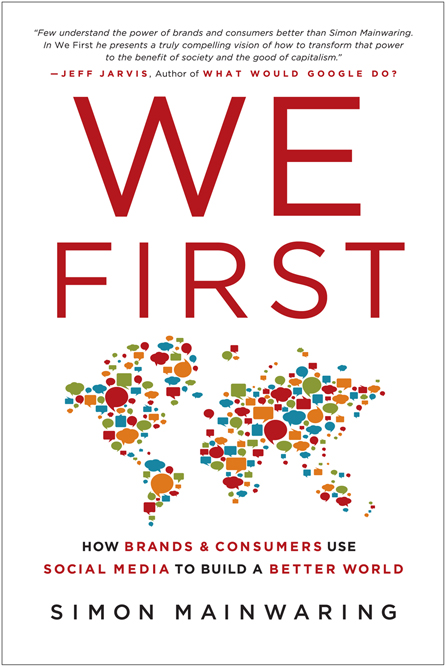It is a curious book indeed that posits the need for a change to the world’s dominant economic system from someone who readily and repeatedly concedes he is not an economist.
But former Ogilvy Worldwide Creative Director for Motorola Simon Mainwaring’s central insight is grounded in the kind of thing that a marketing guy would think of. For we are in the business of creating desire and demand. And on a global scale, rightly or wrongly, the trappings of Western European/American Culture are the images of success that the world chases after. Whether we’re talking about the skyrocketing prices of Impressionist paintings or the re-creation of European capitals in the Chinese countryside or the on-going appeal of Coca-Cola regardless of geography, demography or era, it is Western European/American icons that the world desires, and by extension, the lifestyle that permits the attainment of those things.
But as Mainwaring points out, this creates a problem for capitalism as the population continues to expand:
The rising number of people is not itself a problem for capitalism. The challenge will be how this growing number of people can become the same type of consumers who now populate the developed world. If every one of those 9 billion people wanted to satisfy their self-interests in the same way the most prosperous countries now do, the world’s resources would not support it.
In other words, if everyone tries to achieve what people like Mainwaring – and us – have been telling them for decades they should achieve (setting aside whether we were right to tell them to want to achieve those things in the first place) the planet will collapse. There simply aren’t enough cows to supply all the steaks, enough gasoline to power all the cars, enough land to build all the houses to hold all the TVs.
So what do we do?
Well, we can start by thinking in terms of “we” and not in terms of “me”, for as Mainwaring points out early in the book “Selfishness is now routinely confused with self-interest” and “our world has changed faster than our minds have been able to adapt. We struggle today because our narrow, self-interested behaviours are no longer functional in an interconnected, globalized world.”
The challenge with proposals like these is often, no matter how well-intentioned or even valuable, the blind eye they turn to the very basic role of business. Businesses are in business to make money. They are not in business to give it away. And yet corporations are often looked upon as being vast coffers of lucre, who, if they only loosened their grip a little, could make the world easier for all of us.
Mainwaring avoids this trap by pointing out that businesses are actually at a cross-roads themselves because people – both as building blocks of corporations but also as the very beings that corporations are trying to sell things to – are changing as well. They are more socially entrepreneurial than ever before and:
The sum of all these social entrepreneurship efforts reflects a powerful trend away from large multinational corporations back toward human-sized enterprises where empathy, creativity, and personal passion – not profits – drive solutions. The monumental rise of grassroots social entrepreneurship proves that people are recognizing the value of using digital tools to create solutions that would never be executed in the traditional corporate world.
Thus, the response of business must not be simply in terms of form, but also in terms of content:
Tom LaForge, Coca-Cola’s director of Knowledge and Insights, has suggested that we are in fact witnessing the evolution of a new type of consumer – a sort of hybrid who is simultaneously a consumer, citizen, environmentalist and community member. In his view, the most successful companies will be those that transform themselves into what he calls ‘social construction brands’ which allow consumers to merge their various identities into one persona. To attract this new class of consumers, however, brands need to become storytellers, stewards of the planet, cultural leaders, and skillful designers.
Thus in the future the line between companies and consumers – between buyers and sellers – is much grayer. It is a future driven as much by economics as it is by social media. A future in which “us” and “them” is a much more difficult to identify.
We First is a dense, thought-provoking, thorough and compelling look at the future and anyone who intends to be around for it – and certainly anyone who hopes to sell anything during it – should pay it close attention
For as William Gibson reminds us, “The future is already here — it’s just not very evenly distributed.”
We First: How Brands & Consumers use Social Media to Build a Better World by Simon Manwaring was published by Palgrave Macmillan on 06/07/11 – order it from Amazon here or from Barnes & Noble here – or pick it up at your local bookseller (find one here).

